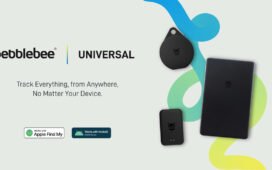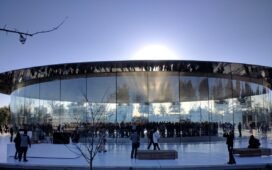Already fascinated with , some members of Gen Z have wondered what those early, simpler social networks were like. Now, they can get an idea thanks to a new app , which recreates some aspects of Myspace more than a decade after its fall from the most-visited site in the US.
The app officially launched earlier this month and briefly made the in Apple’s App Store. Dreamed up by Gen Z founder Tiffany Zhong, noplace bills itself as both a throwback and an alternative to mainstream social media algorithms and the creator culture that comes with them. “I missed how social media used to be back in the day … where it was actually social, people would post random updates about their life,” Zhong tells Engadget. “You kind of had a sense of where people were in terms of time and space.”
Though Zhong says she never got to experience Myspace firsthand — she was in elementary school during its early 2000s peak — noplace manages to nail many of the platform’s signature elements. Each user starts with a short profile where they can add personal details like their relationship status and age, as well a free-form “about me” section. Users can also share their interests and detail what they’re currently watching, playing, reading and listening to. And, yes, they can embed song clips. There’s even a “top 10” for highlighting your best friends (unclear if Gen Z is aware of how much that particular Myspace feature inflicted on my generation).
Myspace, of course, was at its height years before smartphone apps with a unified “design language” became the dominant medium for browsing social media. But the highly customizable noplace profiles still manage to capture the vibe of the bespoke HTML and clashing color schemes that distinguished so many Myspace pages and websites on the early 2000s internet.
There are other familiar features. All new users are automatically friends with Zhong, which she confirms is a nod to Tom Anderson, otherwise known as “Myspace Tom.” And the app encourages users to add their interests, called “stars,” and search for like-minded friends.
Despite the many similarities — the app was originally named “nospace” — Zhong says noplace is about more than just recreating the look and feel of Myspace. The app has a complicated gamification scheme, where users are rewarded with in-app badges for reaching different “levels” as they use the app more. This system isn’t really explained in the app — Zhong says it’s intentionally “vague” — but levels loosely correspond to different actions like writing on friends’ walls and interacting with other users’ posts. There’s also a massive Twitter-like central feed where users can blast out quick updates to everyone else on the app.
It can feel a bit chaotic, but early adopters are already using it in some unexpected ways, according to Zhong. “Around 20% in the past week of posts have been questions,” she says, comparing it to the trend of Gen Z using TikTok and YouTube as . “The vision for what we’re building is actually becoming a social search engine. Everyone thinks it’s like a social network, but because people are asking questions already … we’re building features where you can ask questions and you can get crowdsourced responses.”
That may sound ambitious for a (so far) briefly-viral social app, but noplace has its share of influential backers. Reddit founder Alexis Ohanian is among the company’s investors. And Zhong herself once in her prior role as a teenage analyst at a prominent VC firm.
For now, though, noplace feels more to me like a Myspace-inspired novelty, though I’m admittedly not the target demographic. But, as someone who was a teenager on actual Myspace, I often think that I’m grateful my teen years came long before Instagram or TikTok. Not because Myspace was simpler than today’s social media, but because logging off was so much easier.
Zhong sees the distinction a little differently, not as a matter of dial-up connections enforcing a separation between on and offline, but a matter of prioritizing self expression cover clout. “You’re just chasing follower count versus being your true self,” Zhong says. “It makes sense how social networks have evolved that way, but it’s media platforms. It’s not a social network anymore.”
This article contains affiliate links; if you click such a link and make a purchase, we may earn a commission.















